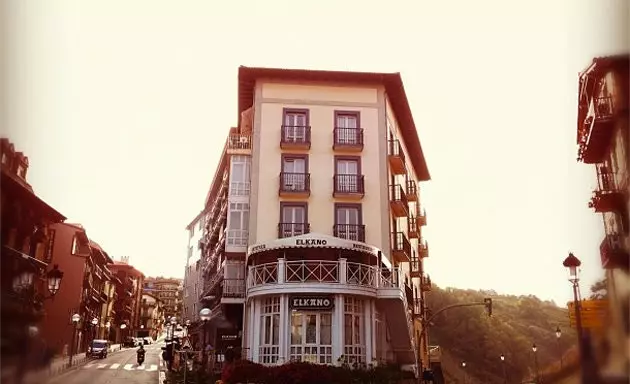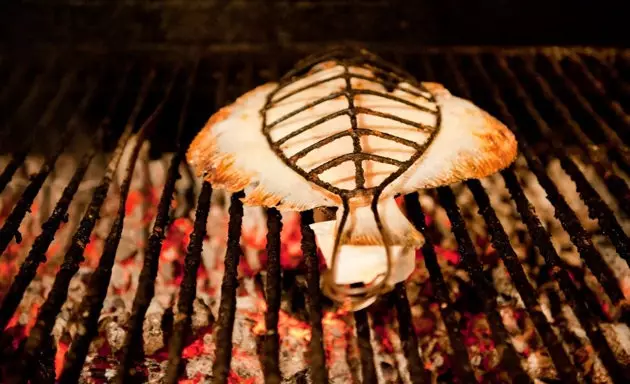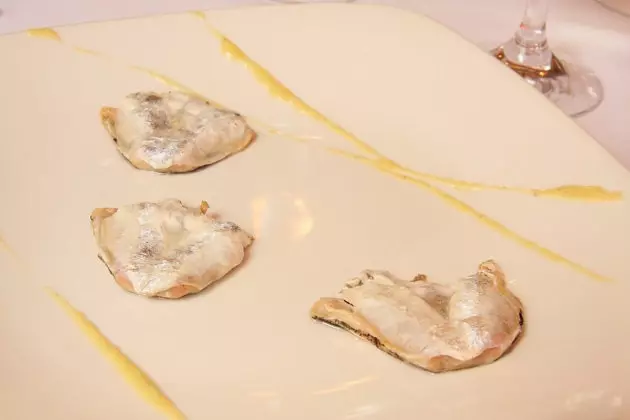
The temple of Getaria: Elkano
Elkano goes on roots. Roots that remind us that all gastronomic journeys are the same journey (the only one that is worthwhile), the one that ends in childhood and memory. And it is that eating is also traveling. Do kilometers and get lost in hotels that are stages in the Tourmalet of our emotions. And that's what we enjoy looking for, one more emotion, a spark, a break. And that's also why, sometimes, we forget where we sit and to whom we belong. We forget (because of other sheets dressed in a tasting menu and laurels) the smells and flavors of the bread and oil kitchen with which we grew up at the wrong time. Until one day you cross the threshold of the house of the Arregui, there where the aromas of the grill cajole the sky, you sit and remember.
PRODUCT, PRODUCT AND PRODUCT "We stick to the product" says Aitor while he reminds us how every morning the cobblestones of the alleys of Getaria are kicked; the Getaria of the Salvador Church, the fishermen and the serene afternoons in front of the port . Of the bicycles, Balenciaga and the aromas -salt, restlessness and marusía- that rise from the dams to the San Antón mountain.
I remember a quote from Orson Welles (great enjoyment, by the way) and that is that he was also emphatic when faced with the stupid question of the pen on duty: “The three best directors in history? John Ford, John Ford, and John Ford.” As well, there is no other way to deal with Elkano: product, product and product . And yes, the other things (the impeccable service, the work in the room, the pastries, the tempo) are more than remarkable, but the product is definitely the soul of each note in the score of this gastronomic experience.

turbot, turbot and turbot
THE TURBOT MASTER CLASS The symphony starts with the unforgettable -really- cocochas . Three versions of the same product: firstly battered in egg and oil. Then grilled, with nothing else, with the only touch (which is not little) provided by the grill. And finally in green sauce, masterful, again.
And arrives turbot , and next to him Aitor's master class. How can he give so much of himself in one piece? He explains to us -like a gastronomic surgeon- every nuance, every secret of the piece. To begin with the two basic parts of the fish, on the one hand the black skin and on the other white according to the sun or the sea (the dark one where the sun hits it and where it has two eyes) and the experience begins: mask, neck, belly, jowls, bones (toasted by the grill, also edible), gelatin and the fragrance of coal like a slight whisper on the plate. Really, eating was this.
I ask him -I demand- the secret of this dish: “fundamental is the proximity and the fishing ground near our coast, of sailors with whom we work, they bring to our house for later cleaning and preparation and with a touch of salt and 'water de Lourdes' put them on the grill and then present them at the table”. No more.
We paired the menu, by the way, with a fantastic Billecart-Salmon overflowing with Pinot Noir and frankly, why Champagne? Well, quoting Madame Bollinger, perhaps the correct question would be And why not always champagne?

Elkano's unforgettable cocochas
AND END How boring food critics when we reflect on the importance of the tablecloth; be supposed to gastronomy is not thought, it happens . Living is supposed to remember those essential things that we often forget: the terroir, the taste of salt water, the sound of bread crunching in your mouth, the aroma of flowers and the taste of oil, fish, vegetables, of light on the tablecloth. Thanks for reminding us, Aitor.
